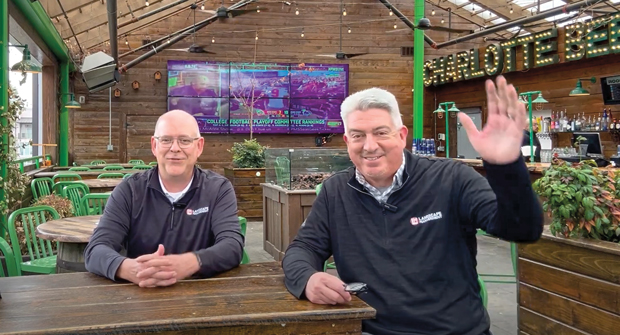Small business is difficult to define. What do you consider to be a small landscape company? A million dollars in annual revenue is a convenient benchmark because many entrepreneurs romanticize about making their first million. Others, anecdotally, peg $3 million as a better benchmark of “making it” in this industry because one can apparently get to $1 million or even $2 million without much of a management team or sophisticated systems. Getting to $3 million, they say, is a feat. So is $3 million the big vs. small threshold? It depends who you ask.
Some would define many of the companies on our annual LM150 list of the largest landscape companies, featured in this issue of LM, as small businesses. But, according to the Small Business Administration (SBA), not even the smallest company on our list, Green Lawn Fertilizing, is classified as a small business. Why? The SBA says $7.5 million in revenue is the largest a landscaping services firm (NAICS 561730) can be to be considered a small business.
The SBA standard is used to determine eligibility for SBA financial assistance, other SBA programs and government procurement programs designed to help small businesses. Why $7.5 million? Well, it’s complicated. You can read the agency’s 61-page explanation about how these determinations are made by industry if you’d like, but the short version is that $7 million is an “anchor” size for the services, retail trade and construction industries, and the SBA adjusts up or down from there based on an analysis of many factors.
Maybe it’s just me, but I think it’s an interesting coincidence that the LM150’s basement butts up against the SBA’s small company benchmark.
It’s difficult to define the size of our industry, but some estimates peg the number of green industry service providers at as many as 400,000. (No wonder “fly-by-night competitors” are a recurring complaint in our LM reader surveys. There are tens of thousands of them, literally.)
Even if you believe 400,000 is an inflated number, and even if you acknowledge the LM150 list is imperfect (considering some firms decline to participate and there are others we just don’t know about), a back-of-the-envelope calculation reveals that 99 percent of the companies in the landscape industry are small businesses by the federal government’s definition.
To me, that means despite years of consolidation and investors entering the industry, it remains to be highly fragmented and dominated by small businesses. It also means the majority of the readers of this magazine are among the 99 percent. We know you’re interested in the happenings of the 1 percent because reader inquiries and Google Analytics tell us so. And we can infer that you want to know how these companies got where they are today, if and how they stay there and how they deal with the universal challenges of the industry.
That’s what we aim to publish every year when we put out our June issue featuring the LM150 list. It’s not supposed to be a who’s who list. It’s supposed to be a guide to help the vast majority learn about how to overcome the obstacles that stand in everyone’s way.

